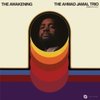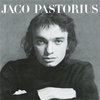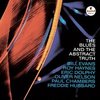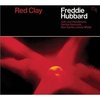AAA 100% Analogue This LP was Remastered using Pure Analogue Components Only from the Master Tapes through to the Cutting Head
Speakers Corner / Columbia - PC 33418 - 180 Gram Virgin Vinyl
Cut & Mastered at Emil Berliner Studio by Rainer Mallard
Pressed at Pallas - Limited Edition
Some jazz purists would say that Wayne Shorter went downhill in the 1970s, when he passionately embraced electric jazz-fusion and co-led the innovative Weather Report with Joe Zawinul. But remember: Those are the same people who also claim that Miles Davis' stunning Bitches Brew has no value and that Chick Corea's visionary Return to Forever was a complete waste -- so it's hard to take their opinions seriously
. The fact is that the 1970s were a highly productive time for Shorter, and it wasn't until the 1980s that the tenor and soprano saxophonist really declined creatively. One of Shorter's best-selling albums from the 1970s was Native Dancer, a Brazilian-oriented jazz-fusion masterpiece that boasts Herbie Hancock on acoustic piano and electric keyboards, and employs such Brazilian talent as singer Milton Nascimento (a superstar in Brazil) and percussionist Airto Moreira.
Everything on this melodic, consistently lyrical effort is a jewel, and that includes Hancock's "Joanna's Theme" as well as pieces by Nascimento ("From the Lonely Afternoons," "Ponta de Areia," "Tarde," "Lilia," and "Miracle of the Fishes") and by Shorter himself ("Ana Maria," "Beauty and the Beast," and "Diana").
The record company Columbia must be given credit for providing Wayne Shorter with a studio and the finances to realise such an expensive and elaborate production in 1974. Whether the costs were covered by the sales is certainly a matter for conjecture. But there were, however, other super-selling pop giants on their roster in the Seventies...
For the present LP Wayne Shorter took a chance with five compositions by Milton Nascimento, wrote three pieces himself, and one was contributed by Herbie Hancock. Apart from Herbie Hancock and Airto Moreira, the musicians were relatively unknown, yet they were all capable of integrating themselves and making a personal contribution. What is truly fascinating in this music is the beauty of the themes, and the affinity to Brazilian folk music. In the liner notes, Wayne Shorter emphasizes the authenticity and the seriousness with which the studio was filled during the recording session. This is absolutely palpable and audible in every second of the music – even after almost half a century. What better reason for including "Native Dancer" in your collection, alongside "Speak No Evil" and "Supernova".
And by the way, with Wayne Shorter you can’t go wrong; you can buy his records without any ifs and buts.
Recording: 1975 at Village Recorders, Los Angeles, by Robert Fraboni
Production: Jim Price
Musicians:
Wayne Shorter
Herbie hancock
Wagner Tiso
David Amaro
Jay Graydon
Milton Nascimento
Dave McDaniel
Robert Silva
Airto Moreira
Selections:
1. Ponta De Areia
2. Beauty and The Beast
3. Tarde
4. Miracle of The Fishes
5. Diana
6. From the Lonely Afternoons
7. Ana Maria
8. Lilia
9. Joanna's Theme
Recording: 1975 at Village Recorders, Los Angeles, by Robert Fraboni

20 Years pure Analogue
Are your records completely analogue?
Yes! This we guarantee!
As a matter of principle, only analogue masters are used, and the necessary cutting delay is also analogue. All our cutting engineers use only Neumann cutting consoles, and these too are analogue. The only exception is where a recording has been made – either partly or entirely – using digital technology, but we do not have such items in our catalogue at the present time
Are your records cut from the original masters?
In our re-releases it is our aim to faithfully reproduce the original intentions of the musicians and recording engineers which, however, could not be realised at the time due to technical limitations. Faithfulness to the original is our top priority, not the interpretation of the original: there is no such thing as a “Speakers Corner Sound”. Naturally, the best results are obtained when the original master is used. Therefore we always try to locate these and use them for cutting. Should this not be possible, – because the original tape is defective or has disappeared, for example – we do accept a first-generation copy. But this remains an absolute exception for us.
Who cuts the records?
In order to obtain the most faithful reproduction of the original, we have the lacquers cut on the spot, by engineers who, on the whole, have been dealing with such tapes for many years. Some are even cut by the very same engineer who cut the original lacquers of the first release. Over the years the following engineers have been and still are working for us: Tony Hawkins, Willem Makkee, Kevin Gray, Maarten de Boer, Scott Hull, and Ray Staff, to name but a few.
At the beginning of the ‘90s, in the early days of audiophile vinyl re-releases, the reissue policy was fairly straightforward. Companies such as DCC Compact Classics, Mobile Fidelity, Classic Records and others, including of course Speakers Corner, all maintained a mutual, unwritten code of ethics: we would manufacture records sourced only from analogue tapes.
Vinyl’s newfound popularity has led many other companies to jump on the bandwagon in the hope of securing a corner of the market. Very often they are not so ethical and use every imaginable source from which to master: CDs, LPs, digital files and even MP3s.
Even some who do use an analogue tape source employ a digital delay line, a misguided ’80s and ‘90s digital technology that replaces the analogue preview head originally used to “tell” the cutter head in advance what was about to happen musically, so it could adjust the groove “pitch” (the distance between the grooves) to make room for wide dynamic swings and large low frequency excursions. Over time analogue preview heads became more rare and thus expensive.
So while the low bit rate (less resolution than a 16 bit CD) digital delay line is less expensive and easier to use than an analogue “preview head”, its use, ironically, results in lacquers cut from the low bit rate digital signal instead of from the analogue source!
Speakers Corner wishes to make clear that it produces lacquers using only original master tapes and an entirely analogue cutting system. New metal stampers used to press records are produced from that lacquer. The only exceptions are when existing metal parts are superior to new ones that might be cut, which includes our release of “Elvis is Back”, which was cut by Stan Ricker or several titles from our Philips Classics series, where were cut in the 1990s using original master tapes by Willem Makkee at the Emil Berliner Studios. In those cases we used only the original “mother” to produce new stampers.
In addition, we admit to having one digital recording in our catalogue: Alan Parsons’ “Eye in the Sky”, which was recorded digitally but mixed to analogue tape that we used to cut lacquers.
In closing, we want to insure our loyal customers that, with but a few exceptions as noted, our releases are “AAA”— analogue tape, an all analogue cutting system, and newly cut lacquers.















